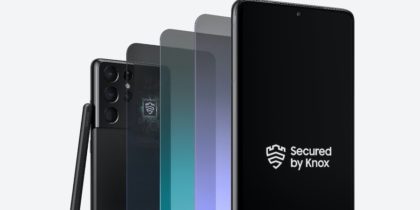What does the basement of your home have in common with securing mobile devices? For starters, succeeding in using mobile devices to transform your business comes with the need to think differently about mobile security.
Making the transition from legacy systems to next generation implementations is a major decision point for virtually any organization trying to take advantage of the new era in end-user enablement through personal devices, connectivity and apps.
Indeed, while “digital transformation” is one of those buzzwords that gets tossed around, what does it really mean — and how will it affect your business? Further, with so many options on the horizon, what are some of the key components you need to be most aware of, and in some cases, concerned by? And how can you avoid many of the failures currently prevalent among companies trying to make digital transformation work for their business with limited success?
At an end-user level, digital transformation will involve mobile devices. One of the most overlooked risks with mobile devices is insider threat. Insider threat can be intentional or unintentional, but both are equally devastating. History has proven the need to protect IT infrastructure from a hardware and software level.
Evaluate Your Mobile Security Plan
Discover if you have the right mobile security plan for your business. Download Now
In the early 1990s, laptop computers were introduced into the workforce — and for more than 10 years the majority of security discussions were focused on antivirus, personal firewalls, VPNs and various other online, network attacks. It wasn’t until 2006 that the introduction of the Trusted Platform Module (TPM), with dedicated security-based hardware below the operating system layer, provided preboot protection against insider threats. Network attacks are, of course, common, and the previously mentioned security measures are necessary — but they can be rendered useless if the threat has the physical device and is an internal resource with insider information and understanding of your system.
That’s where the lockdown of your entire mobile device’s structure is key. All too often the front door of a home is locked and security measures are in place — but the homeowners forget to secure the basement entryway. Think of the device’s hardware as its basement. IT managers are spending dollars and man-hours to secure the software of their mobile devices through mobile device management (MDM) or enterprise mobility management (EMM), but not considering the vulnerabilities of unsecured hardware.
IT managers need to understand that all mobile devices have basements, and malicious hackers may be trying to gain entry through the bottommost level.
Mobile devices — especially tablets and handheld phones — are just as vulnerable to these types of attacks. When corporations decide their digital transformation strategy, the mobile devices they choose will create a threat vector that can be exasperated if lessons have not been learned from the laptop computers of yesteryear.
Watch the video to learn more about chip-up security and why protecting a mobile device’s hardware and software is a lot like locking the doors on your home. Download this free, comprehensive guide to conducting a mobile security assessment for your enterprise.










